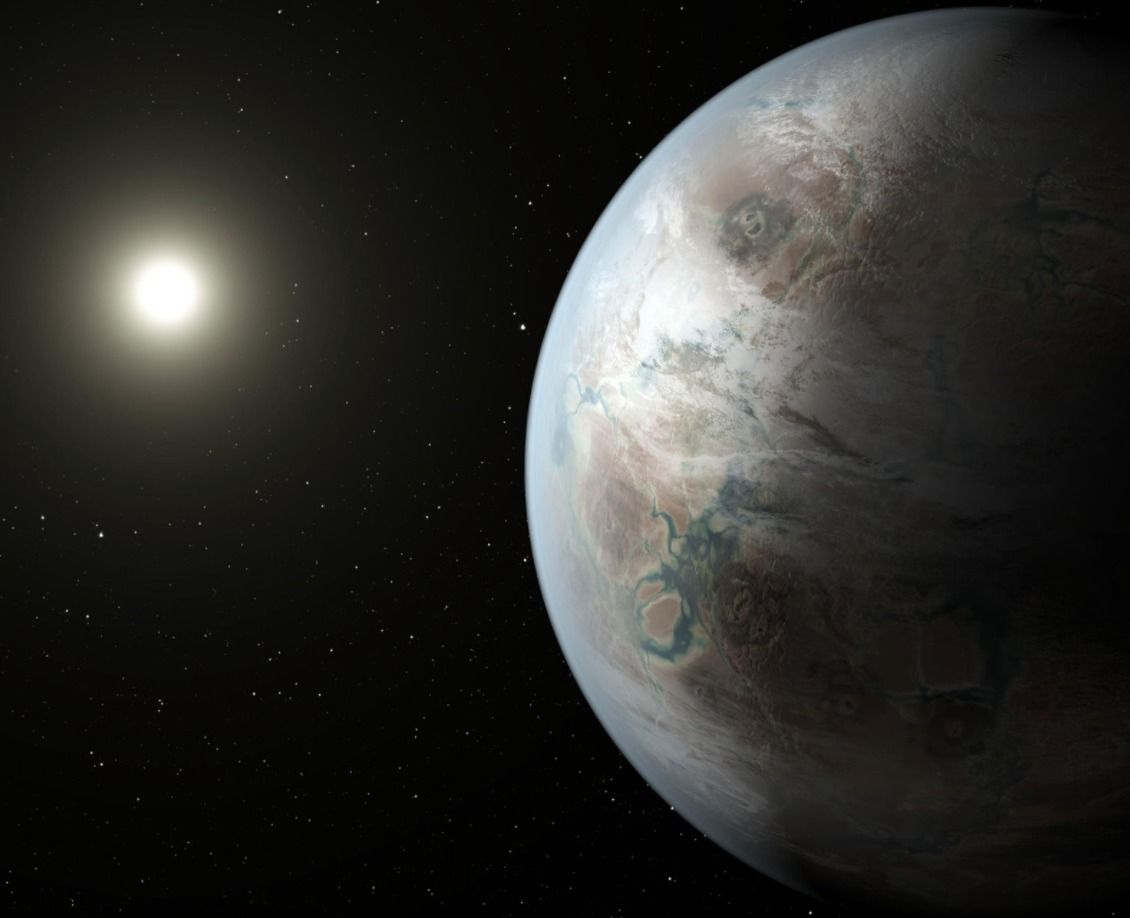UPS has successfully tested a drone that launches from the top of a UPS truck and autonomously delivers packages. http://abcn.ws/2lsyjjM
Posted in drones, robotics/AI
UPS has successfully tested a drone that launches from the top of a UPS truck and autonomously delivers packages. http://abcn.ws/2lsyjjM
Interestingly, Seager, who studies bio signatures in exoplanet atmospheres, has suggested that two inhabited planets could reasonably turn up during the next decade, based on her modified version of the Drake equation, Space.com notes. Her equation focuses on the search for planets with biosignature gases — gases produced by life that can accumulate in a planet atmosphere to levels that can be detected with remote space telescopes.

NASA will hold a news conference at 1 p.m. EST Wednesday, Feb. 22, to present new findings on exoplanets — planets that orbit stars other than our sun. As of Feb. 21, NASA has discovered and confirmed 3,440 exoplanets.
The briefing participants are Thomas Zurbuchen, associate administrator of the Science Mission Directorate at NASA Headquarters in Washington; Michael Gillon, astronomer at the University of Liege in Belgium; Sean Carey, manager of NASA’s Spitzer Science Center at Caltech/IPAC, Pasadena, California; Nikole Lewis, astronomer at the Space Telescope Science Institute in Baltimore; and Sara Seager, professor of planetary science and physics at Massachusetts Institute of Technology, Cambridge. Details of the findings are embargoed by the journal Nature until 1 p.m.
We may be about to meet some strange new worlds beyond our solar system.
NASA will hold a news conference Wednesday to make an announcement on exoplanets, planets that orbit a star other than our own sun. You can tune in at 1 p.m. ET and stick around for a Reddit Q&A with the researchers at 3 pm.
NASA has enlisted a professor from the University of Central Florida (UCF) in order to find a way of 3D printing structures on Mars.
Pegasus Professor Sudipta Seal, interim chair of UCF’s Materials Science and Engineering program is looking at how metals can be extracted from Martian soil. Speaking about the project, Seal said,
It’s essentially using additive-manufacturing techniques to make constructible blocks. UCF is collaborating with NASA to understand the science behind it.
Pulling uranium out of seawater could be a cost-effective way to source nuclear fuel, scientists have found, and the technique could pave the way for coastal countries to switch to nuclear power.
With the International Atomic Energy Agency currently predicting an increase of up to 68 percent in nuclear power production over the next 15 years, finding a new, more environmentally friendly source of uranium — the most critical ingredient in nuclear power — could give this alternative to fossil fuels a boost.
Researchers from Stanford University in California have found a way to more efficiently extract the uranium dissolved in our oceans, which could one day help nations with plenty of ocean-front land and no uranium collect fuel for nuclear energy.
We celebrate her birthday and life but what fun is there to living so long when aging takes its toll? Science is aiming to do better, find out how here!
Today, February 21, is the birthday of Jeanne Louise Calment – the oldest verified human being ever, who managed to live an amazing 122 years and 164 days!
Jeanne was an independent and positive person, and she managed to live all alone until aged 110. After a fire in her apartment she moved into a nursing home, but even there she was still able to take care of herself. However, shortly before her 115th birthday she fell down a stairway and never fully recovered her ability to walk.
Surprisingly, when Jeanne was 118 years old, cognitive tests revealed she scored within the normal range, without signs of dementia. However, by that time she was physically frail and required a wheelchair.
“The automation of factories has already decimated jobs in traditional manufacturing, and the rise of artificial intelligence is likely to extend this job destruction deep into the middle classes, with only the most caring, creative or supervisory roles remaining.” — Stephen Hawking.
Automation is inevitable. But we still have time to take action and help displaced workers.
Automation is accelerating. The software powering these robots becomes more powerful every day. We can’t stop it. But we can adapt to it.